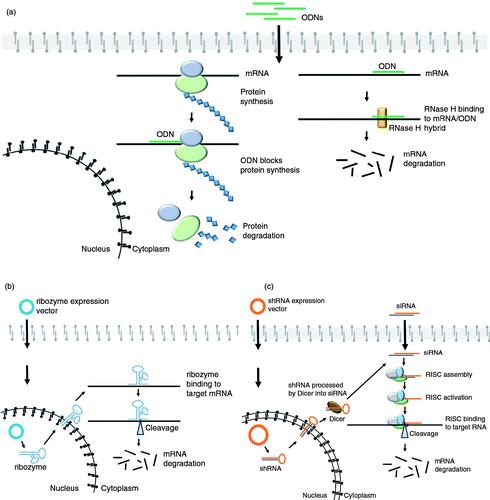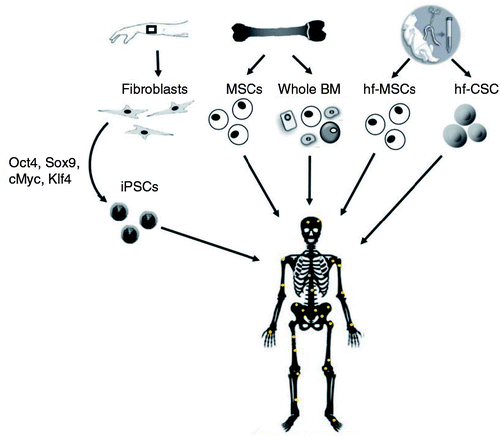Figures & data
Fig. 1 Gene therapy strategies to target mutant collagen transcripts. (a) Antisense oligodeoxyribonucleotides (ODNs) are single-stranded DNA molecules that upon their entry into a cell are able to hybridize to their target RNA leading to its degradation through RNAase H or to directly inhibit protein translation. (b) Hammerhead ribozymes, synthetic RNA molecules containing a catalytic core and binding arms complementary to the mutant mRNA, specifically bind to the target mRNA leading to its degradation (Citation33). (c) Short interfering RNA (siRNA) can either be transfected into the target cells as synthetic double-stranded RNA or produced by plasmids coding for small hairpin RNA (shRNA) and stably incorporated into the endogenous genomic DNA. In the latter case, following transcription, the shRNAs are processed by Dicer to obtain siRNA. siRNAs are incorporated into the nuclease-containing multiprotein complex RISC (RNA-induced silencing complex) and one of the two siRNA strands, the guide strand, guides the RISC to its complementary target mRNA, which is then cleaved and degraded (Citation34).

Fig. 2 Potential sources of donor stem cells for OI cellular therapy based on their use in preclinical or clinical trials. iPSCs: induced pluripotent stem cells; MSCs: mesenchymal stem cells; BM: bone marrow; hf-MSCs: human fetal mesenchymal stem cells; hf-CSCs: human fetal chorionic stem cells.

Table 1 Cellular therapy in OI patients
